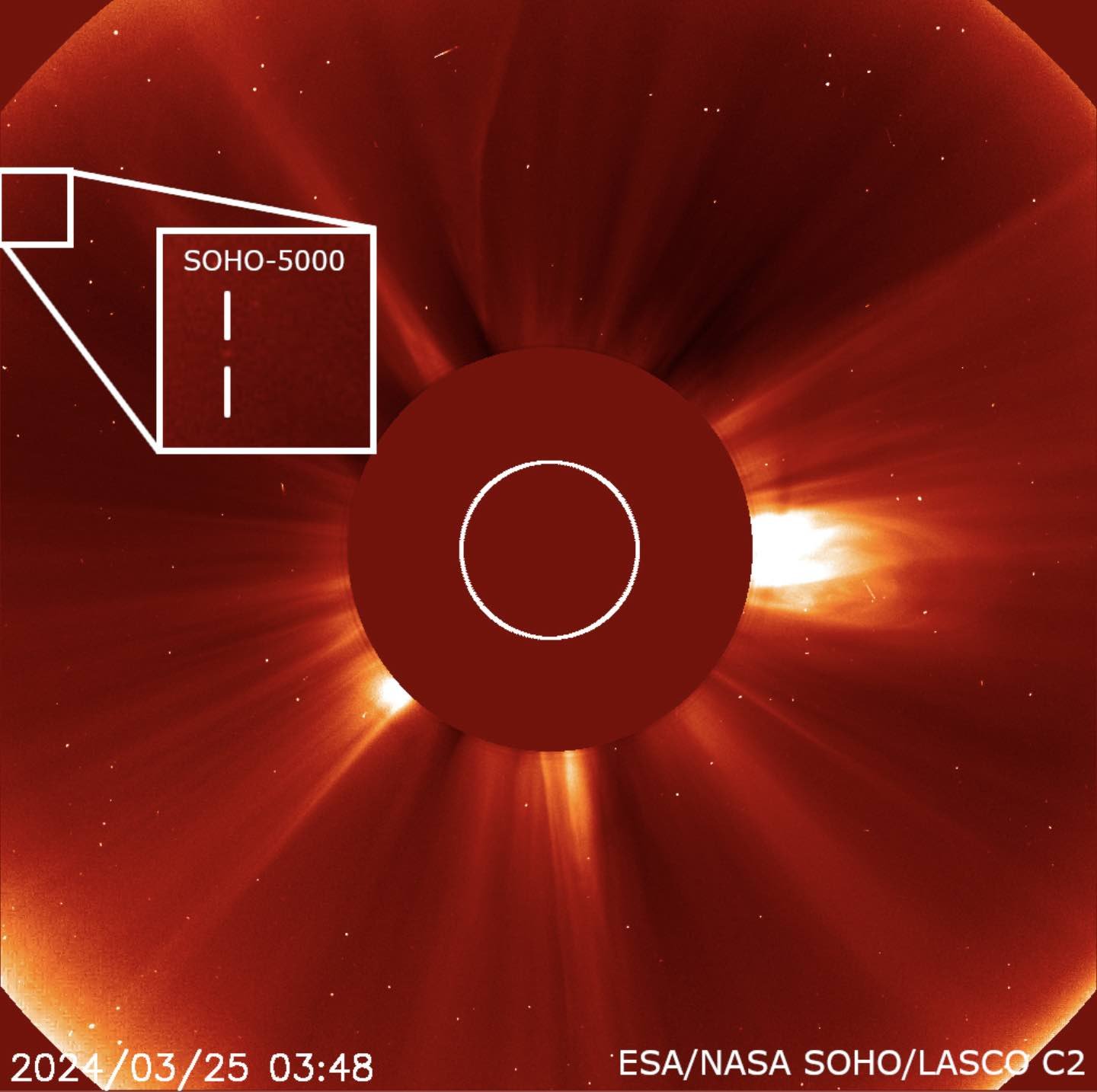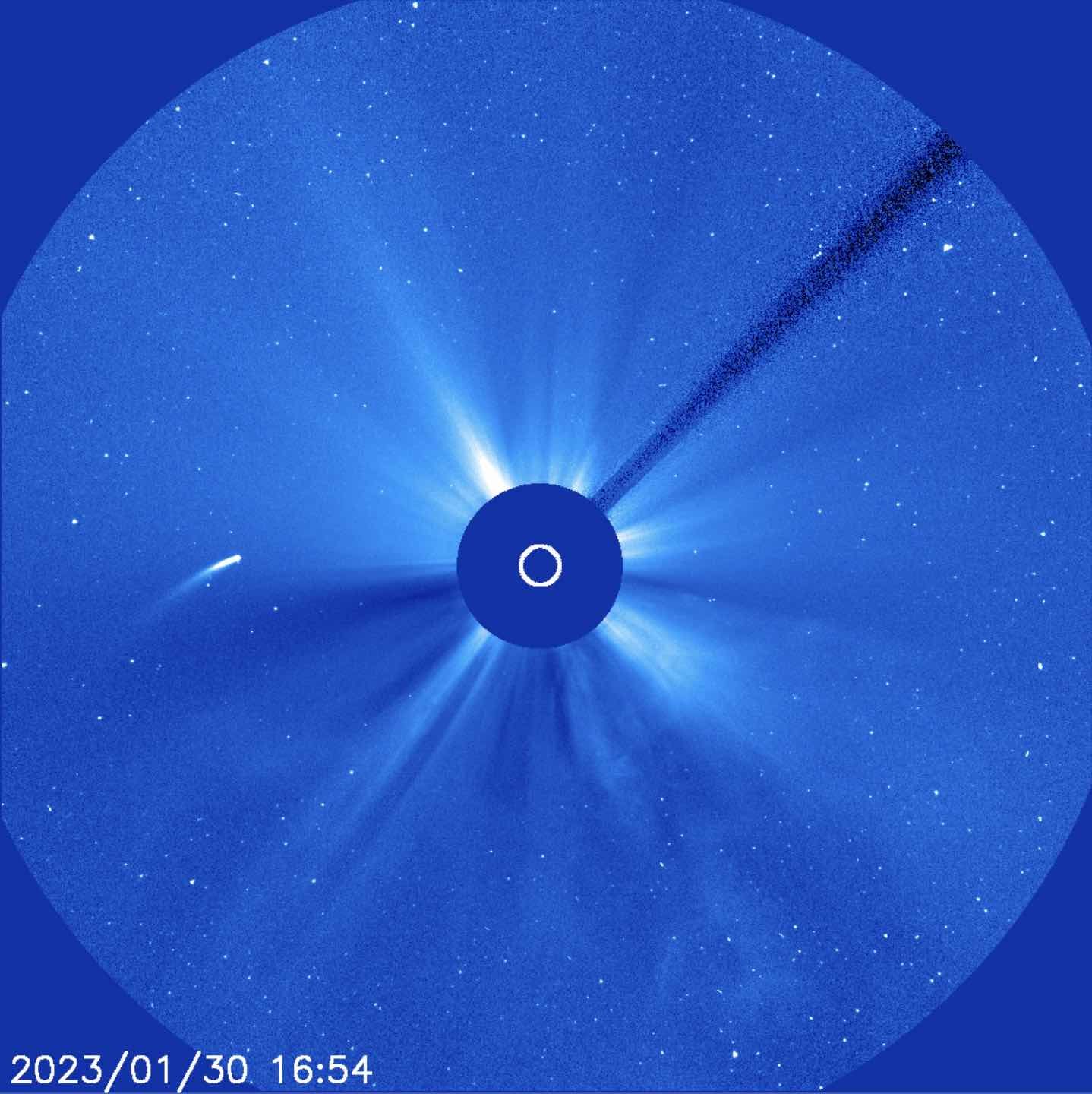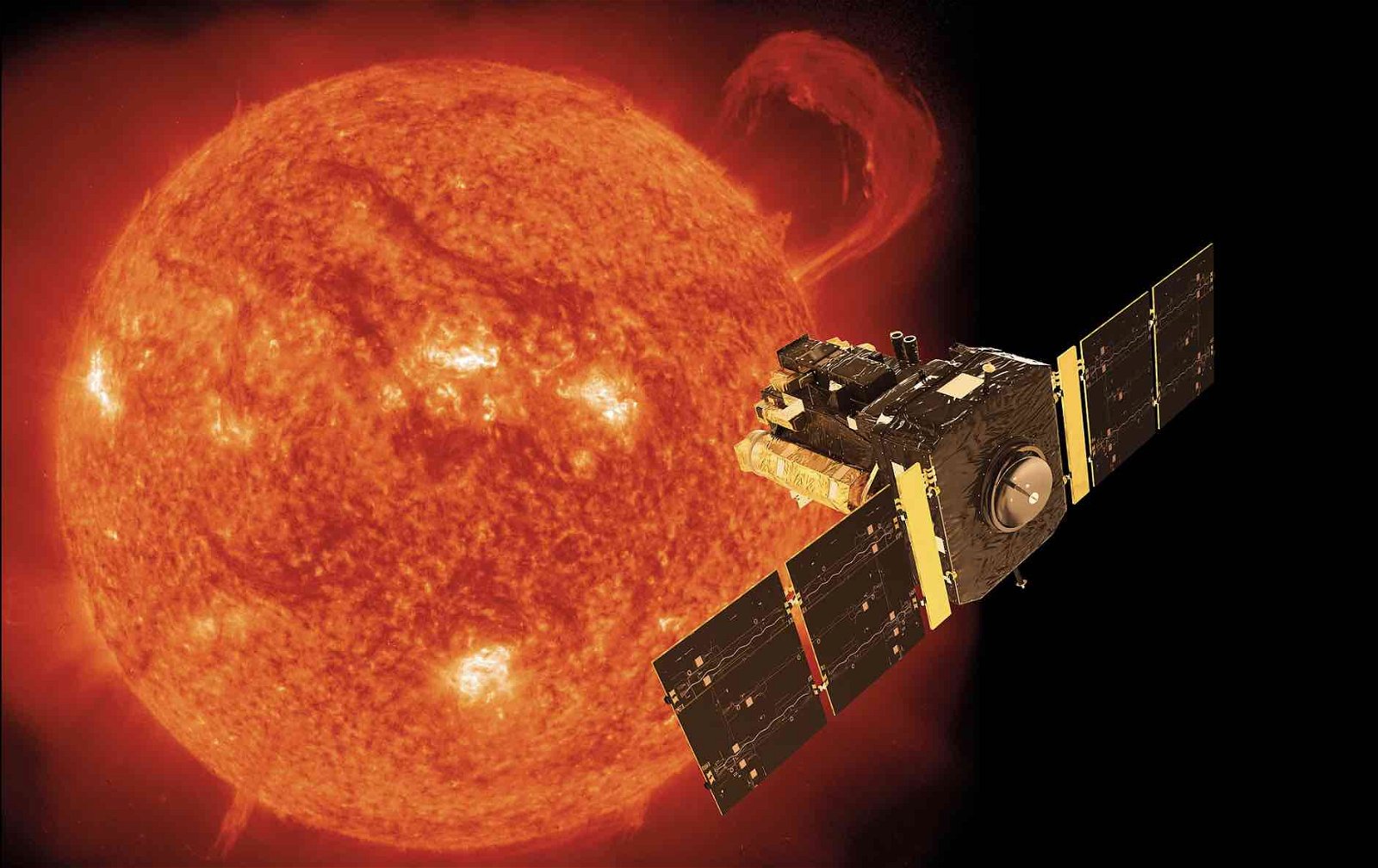The recent discovery of the 5,000th comet by the NASA-funded Sungrazer Project has been hailed as the latest milestone achievement in one of the U.S. Naval Research Laboratory’s (NRL) most prolific citizen science programs.
The comet was discovered in data made available from the joint NASA and European Space Agency (ESA) Solar and Heliospheric Observatory (SOHO). Like almost all the comets the project has spotted, it was detected with the NRL’s Large Angle Spectrometric Coronagraph (LASCO) telescope aboard the SOHO satellite.
The LASCO telescope provides images of some of the Sun’s most mysterious regions, including the solar corona and near-Sun region. Due to the remarkable sensitivity of LASCO’s coronagraph, it has also led to the collection of what now totals 5,000 previously unknown comets passing close to the Sun, which normally are invisible to observers on Earth.


Researcher Karl Battams, Ph. D., the principal investigator of LASCO and the Sungrazer Project, said that nobody ever expected LASCO to become the most prolific comet spotter in history.
“The amount of data and science returned has just been beyond our wildest dreams,” Battams said in a statement.
A citizen science effort with funding from NASA and operated by the NRL, the Sungrazer Project has collected reports of comets operating close to the Sun from users around the world for close to two decades.
The 5,000th comet was spotted by Hanjie Tan, an astronomy Ph.D. student in Prague originally from Guangzhou, China, who has been a part of Sungrazer’s citizen science effort since he was in his early teens.
The new comet Han discovered is believed to have survived its near pass alongside the Sun, although many others are incinerated as they approach its surface.
Dubbed SOHO-5000, the comet is among a series of short-period comets astronomers count among what they call the “Marsden group,” which describes around 75 ancient comets believed to be the remnants of an earlier near-Sun comet, 96P/Machholz, which makes an appearance every five years.


Having become one of the most prolific comet-detecting efforts of all time, the SOHO comets have provided a tremendous amount of new information about the composition of these speeding space objects, which can reach speeds of close to 100,000 miles an hour as they approach the Sun.
The SOHO/LASCO data have also gleaned other details about comets, including their physical properties, fragmentation, and the changes their orbits undergo with time. The data also broaden our knowledge of the Sun by providing real-time imagery of solar eruptions, which often contribute to space weather events that can potentially interfere with communications systems on Earth.
Although SOHO’s record-breaking achievements have continued to supply valuable heliospheric and cometary data for close to three decades, the mission was initially only expected to last two years and will soon reach the end of the program’s lifetime.
“It will be truly sad when the SOHO mission finally ends,” Battams recently said, “but the discoveries that it has made over nearly the past 30 years have completely revolutionized heliophysics and comet science, so we have so very much to thank SOHO for.”
Additional details about the SOHO project and its discoveries can be found on its official NASA page.
Micah Hanks is the Editor-in-Chief and Co-Founder of The Debrief. He can be reached by email at micah@thedebrief.org. Follow his work at micahhanks.com and on X: @MicahHanks.

